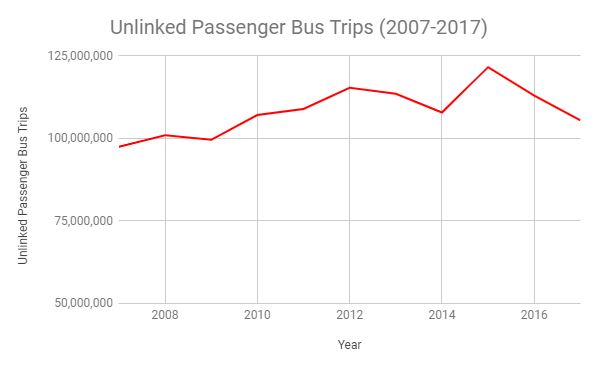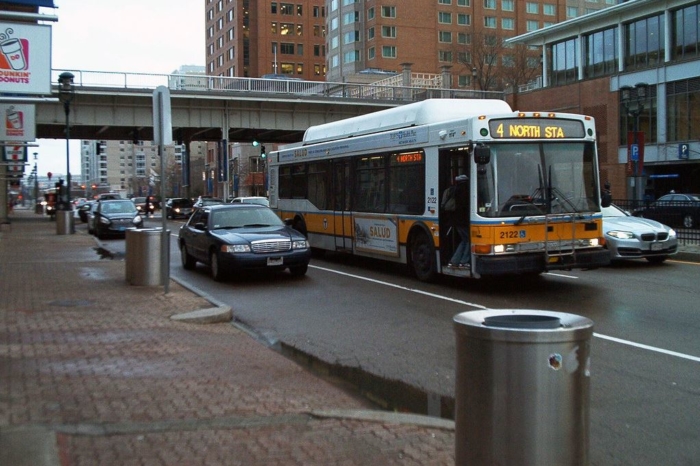MBTA’s Bus Program Driving in the Wrong Direction
According to Pioneer Institute’s MBTAAnalysis.com, the MBTA’s bus program has the second largest ridership of all MBTA modes of transportation trailing only the heavy rail system. However, in recent years ridership has begun to decline while operating expenses have risen.
From 2015 to 2017 unlinked passenger bus trips decreased by 13.3%. This was a significant shift as ridership had increased by 22.1% from 2009 to 2015. Further, total operating expenses continued to increase despite the falling ridership.

Since 2015, when ridership began to decrease significantly, bus operating expenses increased by 7.1%. The expenses show no signs of slowing, as they grew by 46.4% between 2007 and 2017, increasing every year in that span. This rise led to the total operating expense per unlinked passenger trip increasing to $4.12 in 2017, a $0.49 jump from 2016 and the largest one-year increase experienced between 2007 and 2017.

Despite falling ridership and rising costs, there is at least one reason to be optimistic about the MBTA’s bus system. The T is dedicated to improving its infrastructure and recapturing the lost riders, as evidenced by the fact that the bus program’s 2017 capital expenditures were the highest since 2007. Further, the MBTA has plans to fully update its bus system as part of the new Better Bus Project, which promises route changes and a new fare collection system.
Harris Foulkes is a Roger Perry Transparency Intern at Pioneer Institute and a rising sophomore at Amherst College studying Economics.



